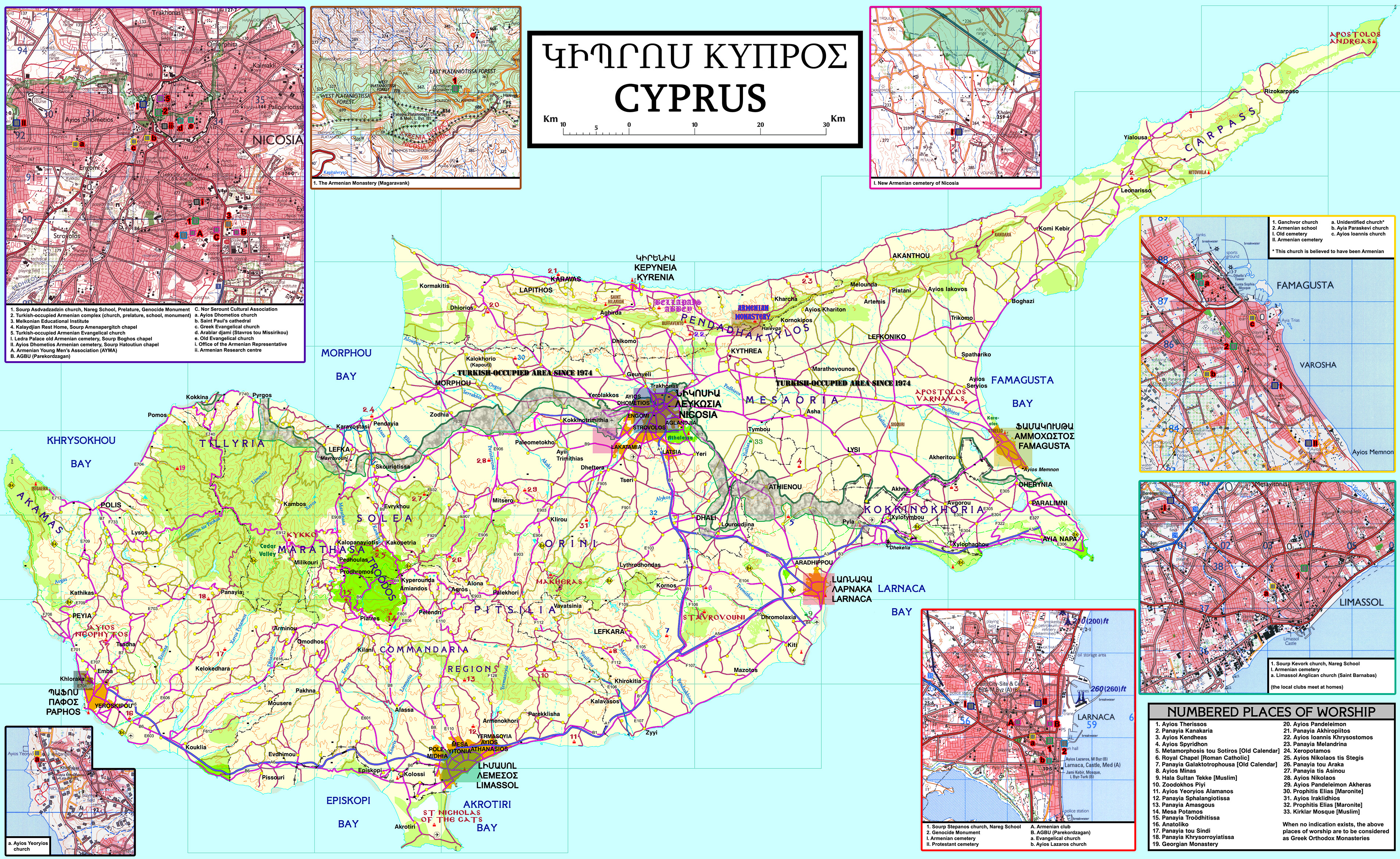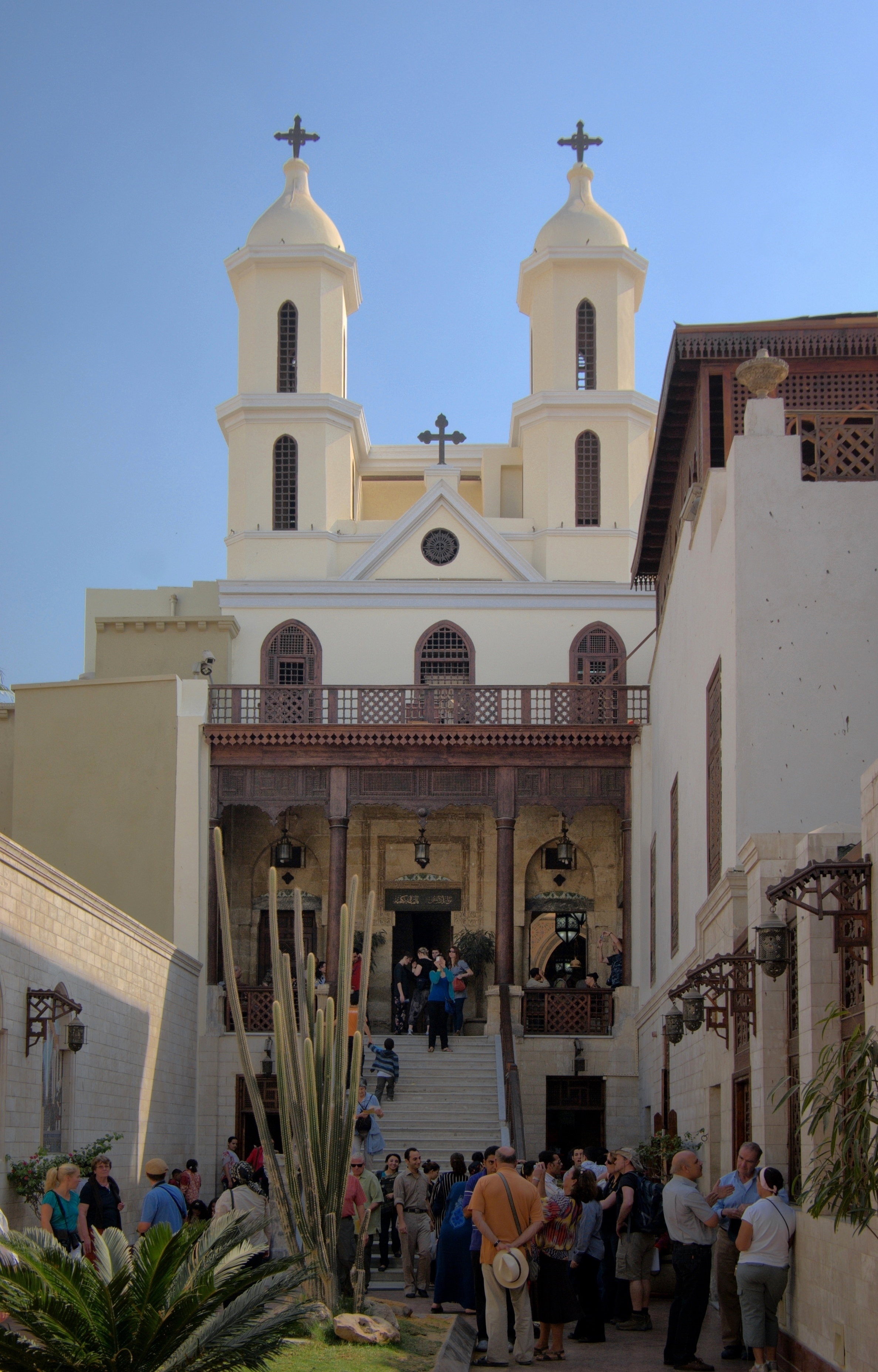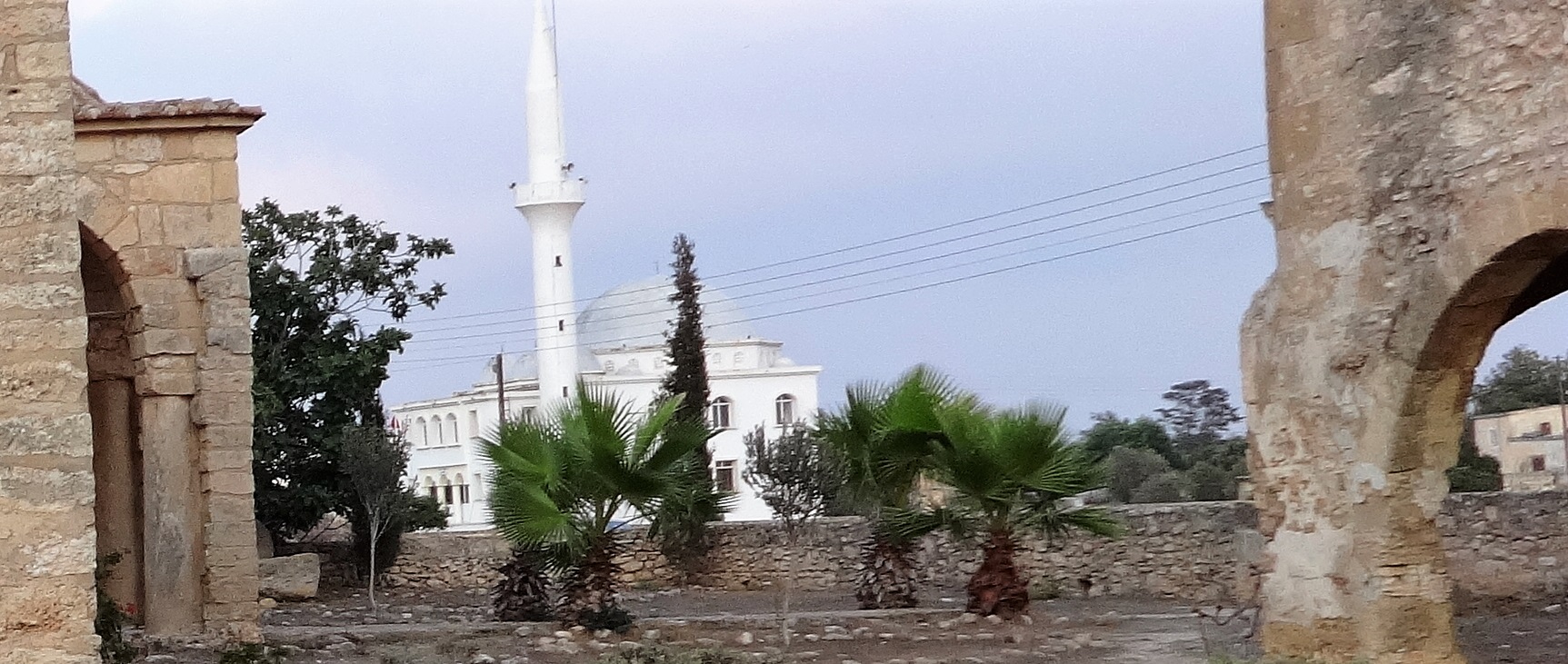|
Magaravank
Sourp Magar ( hy, Սուրբ Մակար or Magaravank, Մակարավանք) is an Armenian monastery located in a forested valley in the Pentadaktylos range in Cyprus. It is ''de facto'' located in Northern Cyprus. The Magaravank stands at 530 metres and is about 3 km from the Halevga Forest Station. In addition to its historical interest as a centre of Armenian culture, Sourp Magar is noted for its picturesque location and distant views of the Mediterranean and the mountains in Anatolia. The monastery had close ties with the Armenian Catholicosate of Cicilia, located in Antelias, Lebanon. History Magaravank was founded in the early eleventh century and at that time seems to have belonged to the Coptic Orthodox Church. It was dedicated to Saint Macarius of Alexandria who died in 395 AD. Of the Coptic history of Sourp Magar nothing is known, but sometime before 1425 the monastery was transferred to the Armenians in Cyprus. Armenians had long been resident in Cyprus, but the ... [...More Info...] [...Related Items...] OR: [Wikipedia] [Google] [Baidu] |
Armenians In Cyprus
Armenians in Cyprus or Armenian-Cypriots ( hy, Կիպրահայեր, el, Αρμένιοι της Κύπρου, tr, Kıbrıs Ermenileri) are ethnic Armenians who live in Cyprus. They are a recognized minority with their own language, schools and churches. Despite the relatively small number of Armenians living in Cyprus, the Armenian-Cypriot community has had a significant impact upon the Armenian diaspora and Armenian people. During the Middle Ages, Cyprus had an extensive connection with the Armenian Kingdom of Cilicia, while the Ganchvor monastery had an important presence in Famagusta. During the Ottoman Era, the Virgin Mary church and the Magaravank were very prominent. Certain Armenian-Cypriots were or are very prominent on a Panarmenian or international level and the fact that, for nearly half a century, the survivors of the Armenian genocide have co-operated and co-existed peacefully with the Turkish-Cypriots is perhaps a unique phenomenon across the Armenian Diaspora. ... [...More Info...] [...Related Items...] OR: [Wikipedia] [Google] [Baidu] |
Republic Of Venice
The Republic of Venice ( vec, Repùblega de Venèsia) or Venetian Republic ( vec, Repùblega Vèneta, links=no), traditionally known as La Serenissima ( en, Most Serene Republic of Venice, italics=yes; vec, Serenìsima Repùblega de Venèsia, links=no), was a sovereign state and maritime republic in parts of present-day Italy (mainly northeastern Italy) that existed for 1100 years from AD 697 until AD 1797. Centered on the lagoon communities of the prosperous city of Venice, it incorporated numerous overseas possessions in modern Croatia, Slovenia, Montenegro, Greece, Albania and Cyprus. The republic grew into a trading power during the Middle Ages and strengthened this position during the Renaissance. Citizens spoke the still-surviving Venetian language, although publishing in (Florentine) Italian became the norm during the Renaissance. In its early years, it prospered on the salt trade. In subsequent centuries, the city state established a thalassocracy. It dominat ... [...More Info...] [...Related Items...] OR: [Wikipedia] [Google] [Baidu] |
Camille Enlart
Camille Enlart (22 November 1862 – 14 February 1927) was a French archaeologist and art historian. His areas of special interest were the Middle Ages and photography. Biography Enlart initially learned painting at the Beaux-Arts de Paris, then studied Law at the École Nationale des Chartes in 1885–1889. In 1893, he was appointed as assistant librarian at the École des Beaux-Arts after a two-year trip to Italy. Between 1894 and 1899, he was deputy to Robert de Lasteyrie at the École Nationale des Chartes. He taught medieval archeology at the École Spéciale d'Architecture and the École du Louvre. In 1903, he became director of the Musée national des Monuments Français The Musée national des Monuments Français ( en, National Museum of French Monuments) is today a museum of plaster casts of French monuments located in the Palais de Chaillot, 1, place du Trocadéro et du 11 Novembre, Paris, France. It now forms ...; he held this position until his death. Publication ... [...More Info...] [...Related Items...] OR: [Wikipedia] [Google] [Baidu] |
Coptic Cairo
Coptic Cairo is a part of Old Cairo which encompasses the Babylon Fortress, the Coptic Museum, the Hanging Church, the Greek Church of St. George and many other Coptic churches and historical sites. It is believed in Christian tradition that the Holy Family visited this area and stayed at the site of Saints Sergius and Bacchus Church (Abu Serga).Coptic Cairo egyptologyonline Coptic Cairo was a stronghold for both before and during the Islamic era, as most of its churches were built after the Muslim conquest of Egypt in the 7th century. ... [...More Info...] [...Related Items...] OR: [Wikipedia] [Google] [Baidu] |
Dumbarton Oaks Papers
Dumbarton Oaks Papers (DOP) is an academic journal founded in 1941 under the auspices of the Dumbarton Oaks Research Library and Collection for the publication of articles relating to Byzantine society and culture from the 4th to 15th century in the Roman Empire as well as its neighboring and successor states. The journal treats sources in medieval Greek, as well as other premodern languages, such as Arabic, Armenian, Coptic, Ethiopic, Georgian, Latin, Old Church Slavonic, and Syriac. Submissions address a range of topics, including art and iconography, architecture, archaeology, codicology, epigraphy, history, historiography, language, law, literature, music, numismatics, palaeography, science, sigillography, and theology Theology is the systematic study of the nature of the divine and, more broadly, of religious belief. It is taught as an academic discipline, typically in universities and seminaries. It occupies itself with the unique content of analyzing th .... Pub ... [...More Info...] [...Related Items...] OR: [Wikipedia] [Google] [Baidu] |
Karpass Peninsula
The Karpas Peninsula ( el, Καρπασία; tr, Karpaz), also known as the Karpass, Karpaz or Karpasia, is a long, finger-like peninsula that is one of the most prominent geographical features of the island of Cyprus. Its farthest extent is Cape Apostolos Andreas, and its major population centre is the town of Rizokarpaso ( el, Ριζοκάρπασο, links=no; tr, Dipkarpaz, links=no). The peninsula ''de facto'' forms the İskele District of Northern Cyprus, while ''de jure'' it lies in the Famagusta District of the Republic of Cyprus. Geography It covers an area of 898 km2, making up 27% of the territory of Northern Cyprus. It is much less densely populated than the average of Northern Cyprus, with a population density of 26 people per km2 in 2010. The town of Trikomo (İskele), the district capital, is considered to be the "gateway" and the geographical starting point of the peninsula, along with the neighboring village of Bogazi (Boğaz). Apart from Trikomo, th ... [...More Info...] [...Related Items...] OR: [Wikipedia] [Google] [Baidu] |
Lythrangomi
Lythrangomi ( gr, Λυθράγκωμη) or Boltaşlı (in Turkish) is a village in the Famagusta District of Cyprus, located on the Karpass Peninsula east of Leonarisso. It is under the ''de facto'' control of Northern Cyprus. The origin of the name Lythrangkomi is uncertain. One suggestion is that it means “erythra komi” (Greek: red village). The Turkish Cypriots adopted the alternative name Boltasli, meaning “many rocks”, in 1958.An Historical Toponymy of Cyprus, by Jack Goodwin, 2 vols., publ, MAM, Nicosia 1984-1985 Until the Turkish invasion of Cyrus in 1974, Lythrangkomi was a mixed village. There was a Turkish/Moslem majority in 1891, when the village had 103 Turkish Cypriots and 89 Greek Cypriots (including 5 at the monastery of Panagia Kanakaria).Census of Cyprus 1891, printed by Eyre & Spottiswoode, London, 1893 Ten years later there were 80 Turks and 111 Greeks.Census of Cyprus 1901, publ. Government printing office, Nicosia, Cyprus, 1901 After this, the Gre ... [...More Info...] [...Related Items...] OR: [Wikipedia] [Google] [Baidu] |
Nave
The nave () is the central part of a church, stretching from the (normally western) main entrance or rear wall, to the transepts, or in a church without transepts, to the chancel. When a church contains side aisles, as in a basilica-type building, the strict definition of the term "nave" is restricted to the central aisle. In a broader, more colloquial sense, the nave includes all areas available for the lay worshippers, including the side-aisles and transepts.Cram, Ralph Adams Nave The Catholic Encyclopedia. Vol. 10. New York: Robert Appleton Company, 1911. Accessed 13 July 2018 Either way, the nave is distinct from the area reserved for the choir and clergy. Description The nave extends from the entry—which may have a separate vestibule (the narthex)—to the chancel and may be flanked by lower side-aisles separated from the nave by an arcade. If the aisles are high and of a width comparable to the central nave, the structure is sometimes said to have three nave ... [...More Info...] [...Related Items...] OR: [Wikipedia] [Google] [Baidu] |
Vartkes Mahdessian
Vartkes Mahdessian ( Armenian: Վարդգէս Մահտեսեան, Greek: Βαρτκές Μαχτεσιάν) is a prominent businessman in Nicosia, Cyprus, managing two companies in Cyprus and the United Arab Emirates and the Representative of the Armenian community in the Cyprus House of Representatives since 2006. Vartkes Mahdessian was born in Nicosia, Cyprus on 13 November 1950. After graduating from the Melikian-Ouzounian School and the English School in 1970, he received his Business Administration diploma from Hatfield Polytechnic and then a master's degree in management in 1974. His professional career began in 1975 with an Italian-Greek cable manufacturer as Area Manager for Iran. In 1978 he moved to the United Arab Emirates, first as Marketing Manager, then as Managing Director and shareholder of International Cable Corporation, a post that he still holds by conducting regular visits to the region. In 1986 he returned permanently to Cyprus and acquired ownership o ... [...More Info...] [...Related Items...] OR: [Wikipedia] [Google] [Baidu] |




